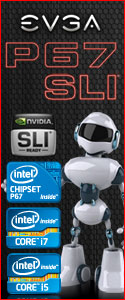Before we get much further along, a list of the Frio CPU Cooler specifications would be in order.
You might notice in the above specifications that the fans are rated at a RPM range from 1200 to 2500 RPM. This is because each included fan has a round dial type knob build in to the cabling, allowing for fan speed adjustment. While this is a nice feature, there really is no mounting option for this knob. This forces the user to open the case to gain access to the fan speed adjusting knob. Either a longer cable for the dial or perhaps the option to use a PCI expansion bracket would have been a good idea here. You do have the option of removing the knob completely if you so desire, but doing so would make the fan run at full speed all the time. Below are a couple pictures showing the fan cabling and attached fan speed adjustment dial.
 |
 |
It’s time to unveil the star of this show, the Frio Cooler itself! The Frio weighs in at a hefty 1,042g (2.297 lbs.) so it’s not a lightweight cooler by any stretch. Once we had this cooler mounted it did not appear to be too heavy as to flex or warp a motherboard, even when loaded up with both fans. We must say that the looks and build quality of the Frio are quite appealing to the eye. The black and red outer areas coupled with the white fan blades really give this cooler an exceptional look. When handling the Frio, the build quality becomes apparent rather quickly. The unit feels extremely solid and everything attached to the cooler fits tightly, a testament to adhering to tight tolerance specifications. The Frio boasts five 8mm heatpipes designed in a “U” design, this should allow for quick dissipation of heat from the CPU’s surface through the copper base and aluminum fins. Speaking of aluminum fins, the Frio boasts no less that 48 rows of .5mm fins!
 |
 |
There are two red plastic bars across the top of the Frio, other that aesthetics they really have no useful function. Lifting the cooler with the red bars will more than likely result in them popping off, they are also not strong enough to use for removing the fan shrouds. These bars do bring a splash of color to the cooler and do compliment the looks quite nicely. Having a look at the nickle coated base reveals the area that will make contact with the CPU. Machine marks were visible to the naked eye, but the finish was overall pretty good.
 |
 |
 |


 Posted in
Posted in 





